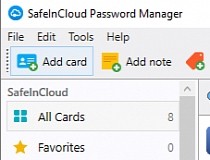
The infrastructure, in this case, is the hardware, software, networking, and facilities running the services. When using Amazon Web Services (AWS) public cloud, for example, AWS says its responsibility is to secure the infrastructure that runs the services customers are using. Whether it is software-as-a-service (SaaS), platform-as-a-service (PaaS), or infrastructure-as-a-service (IaaS), the customer loses some control over how their data is secured physically and virtually. The dynamic between cloud service provider and customer depends on the type of cloud service the customer is subscribed to. Cloud providers and customers must communicate and understand which one is responsible for the various aspects of securing the cloud. Insufficient cloud security is particularly an issue around the cloud provider’s APIs that customers use to connect to the cloud.

Not all cloud service providers are equal in the levels of security they provide, and some may have insufficient security measures to protect the cloud infrastructure. Insufficient Cloud SecurityĪ cloud customer should do considerable research into the security features of all clouds they might subscribe to. Likewise, if a hacker gains entry, firewalls monitor the traffic entering and exiting the cloud for threats that it can prevent or send alerts about to the administrators. If a hacker manages to get access to data, encryption prevents them from easily reading the protected data.
Company wide safeincloud code#
It can involve users entering a password, a code sent to a device like the user’s phone, and a piece of hardware with an authentication token on it to plug into the computer. A data breach is when a hacker successfully taps into a network and collects sensitive information.ĭepending on the organization breached, this information can include passwords, personal health information, financial information, intellectual property, or personally identifiable information (PII).Ī comprehensive approach to protect against data breaches includes multi-factor authentication (MFA), encryption, and firewalls, among other technologies. Top Cloud Security Issue: Data BreachesĪ data breach is a top concern of organizations because of serious financial and reputational consequences. This can be an issue if the cloud has insufficient security measures, tenant segmentation fails, if data is lost, or if the servers are misconfigured.

An organization that uses the public cloud loses a degree of control over how the data is secured. The modern networks used by organizations typically include the cloud as another network node. In order to keep a baseline of security measures, industries and governments have established various security standards. Whether attacks come from inside or outside of the organization, malicious actors are pursuing data from nearly all angles.

The top cloud security issues include a wide range of threats and ways to handle them.


 0 kommentar(er)
0 kommentar(er)
